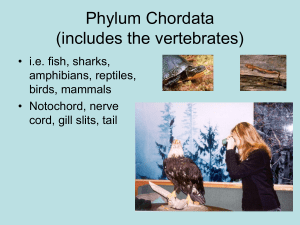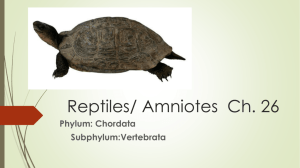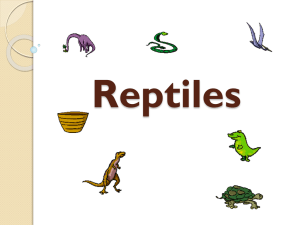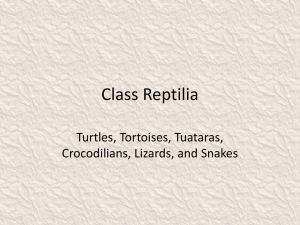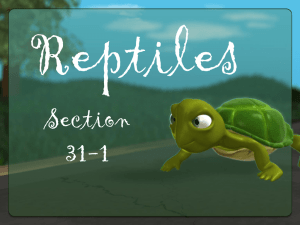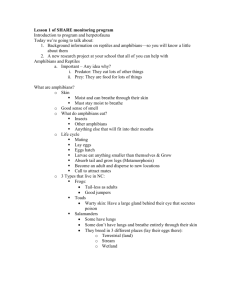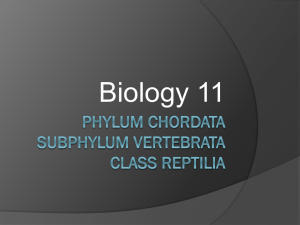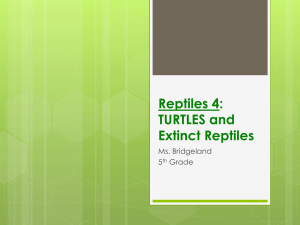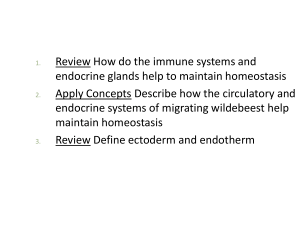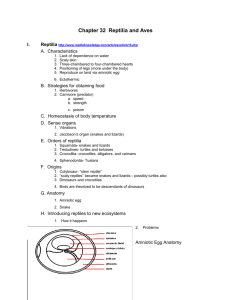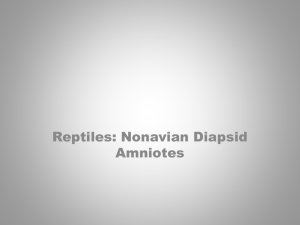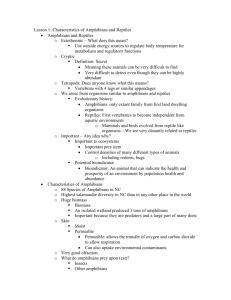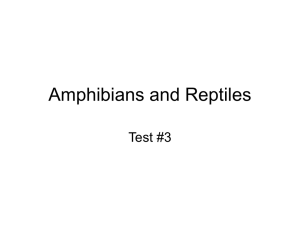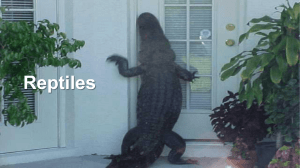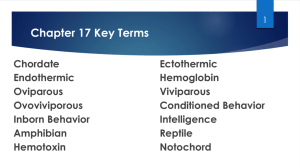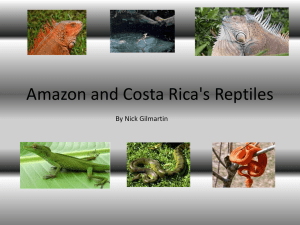30. Class Reptilia Notes
advertisement
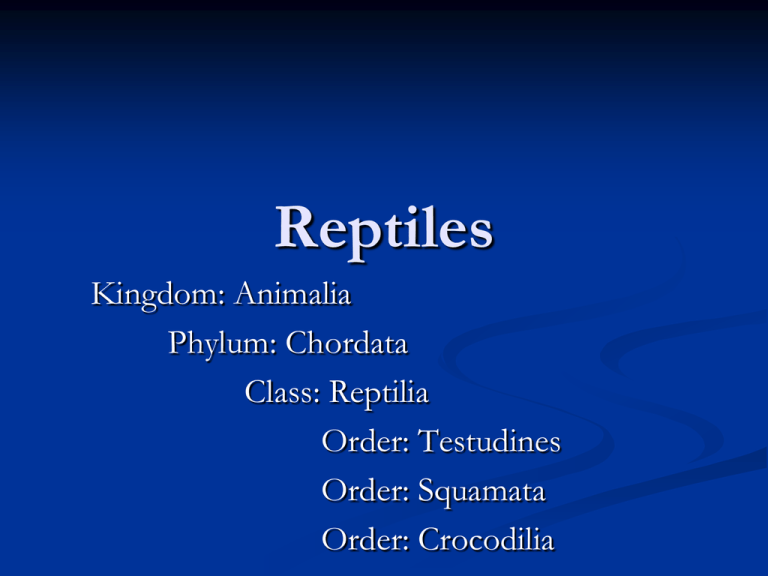
Reptiles Kingdom: Animalia Phylum: Chordata Class: Reptilia Order: Testudines Order: Squamata Order: Crocodilia Class Reptilia Herpetology – study of reptiles Ectotherms – cold blooded, must get heat from environment Skin is covered with scales Most are egg-laying Tetrapods – landdwelling vertebrates Ectotherms Cold-blooded animals take on the temperature of their surroundings More active in warm environments and very sluggish in cold environments Results of muscle activities that work on chemical reactions which speed up in warmer temperatures Ectotherms Must bask in sun to warm-up and speed-up metabolism Lie in certain directions and expand rib cages to absorb more heat If too hot they move to shade, burrow, open their mouth wide, or lighten skin color Advantages vs. Disadvantages Require less energy than warm-blooded animals Therefore in food scarce environments such as the desert they do not have to burn energy to keep warm Can reduce body temperature to save energy Immune system more efficient because bacteria grows slower in the cold Must be warm out for them to have a certain level of activity to hunt and defend themselves Also need it to be warm to find a mate and reproduce Class Reptilia Breathe air using lungs Evolved from amphibians Evolution Evolved during the Paleozoic Era from the dinosaurs Included Icthyosaurs, plesiosaurs, placodonts, and mosasaurs Order Testudines Turtles, tortoises, and terrapins Bony or cartilaginous shells are used for protection Shell is fused to backbone Sea Turtles Legs have been modified into flippers Cannot retract head into shell Lay eggs on land 8 species who live primarily in warm water, all endangered Feed on sea grasses and seaweeds Beak All turtles do not have teeth, instead they have a beak and strong biting jaws Eat everything from sea weeds to sponges to barnacles to jellyfish Exploitation Nesting areas turned into resorts Eggs are taken by the bucketful to be eaten Adults meat considered a delicacy and cartilage used in turtle soup Some shells are collected as jewelry Shrimp nets trap and kill Order Squamata Includes sea snakes and marine iguanas Marine Iguanas Only lizard to feed underwater Shorter snout to scrape algae off of rocks Long, curled claws to hold onto rocks in rougher waters Longer, flattened tails to help swimming Diving Ability Can withstand long bouts of lactate for periods of to two minutes Imagine being able to sprint as hard as you can for two minutes straight Sea Snakes Breath air Flattened tail for swimming Flap covers nostril while swimming Eels have gills and no scales Sea Snakes Feed on fish, fish eggs, and eels Stay in shallow waters and can be found in groups Venom Venom used to immobilize not kill prey Most toxic snakes on earth Bite is painless due to short fangs ½ Hour Symptoms: stiffness, muscle aches, spasm of jaw, pain in limb Eventual symptoms: Blurred vision, drowsiness, and respiratory paralysis Order Crocodilia Saltwater Crocodile Found in estuaries and along the coast of Indian Ocean, Australia, and Western Pacific Islands Evolution of Crocodile Last of the types of reptiles around during the dinosaurs Saltwater Crocodile Animal most likely to attack and eat a human 17-23 feet and 1000-2000 pounds in size Some estimated at as much as 33 feet


